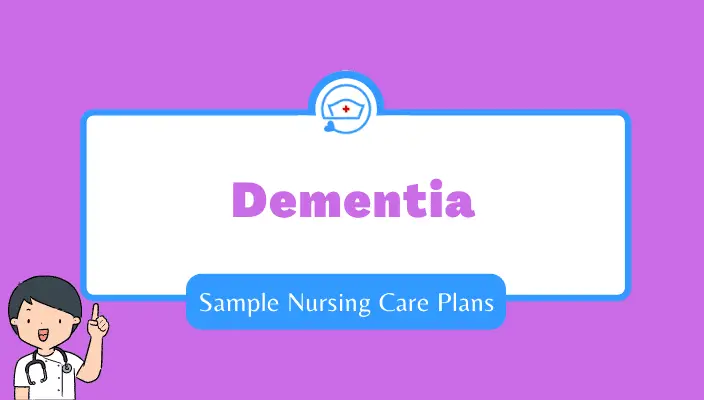Here we’ll create three sample nursing care plans for anemia based on a hypothetical case scenario.
Iron Deficiency Anemia Case Scenario
A 20-year old female presents to the emergency department with reports of fatigue, weakness, and shortness of breath with activity for the last week. The patient reports feeling fatigued for the last few months but noticed a big change yesterday morning when she wasn’t able to complete her morning walk due to shortness of breath and muscle soreness. The patient recently became a vegetarian and verbalized “maybe I’m just low on protein.” Her past medical history includes menorrhagia and her last menstrual period was 2 weeks ago.
Upon assessment, the patient is noted to be pale with scattered bruising and petechiae. Her temperature is 37.5 C, heart rate is 96 BPM, blood pressure is 98/46 (59) mmHg, and oxygen saturation is 98% on room air. She is alert and oriented, and her lung sounds are clear upon auscultation.
The CBC reveals low hemoglobin at 8.4 g/dL and low hematocrit at 26.24 L/L. RBCs are 3.32 x10^6/mcL and WBC are normal at 7.73 K/mcL. Platelets are slightly decreased at 130 K/mcL. Further blood work reveals iron is 9 umol/L and ferritin is 8.3 ug/L. A peripheral smear shows small, hypochromic red blood cells.
The patient is admitted to the hospital with Iron Deficiency Anemia.
#1 Sample Nursing Care Plan for Iron Deficiency Anemia – Risk for Bleeding
Nursing Assessment
Subjective Data:
- The patient reports fatigue, weakness, and shortness of breath
Objective Data:
- Hemoglobin 8.4 g/dL, hematocrit 26.24 L/L, and RBC 3.32 x10^6/mcL
- Iron 9 umol/L and ferritin 8.3 ug/L
- Platelets 130 K/mcL
Nursing Diagnosis
Risk for bleeding related to low iron and abnormal RBC production as evidenced by low hemoglobin, hematocrit, and platelets.
Goal/Desired Outcomes
Short-term goal: The patient’s vital signs and labs will remain stable with no worsening signs of bleeding by the end of the shift
Long-term goal: The patient will continue iron supplementation at home and maintain normal blood levels of iron and platelets
Nursing interventions with rationales for anemia – Risk for bleeding
| Nursing Interventions | Rationales |
| Administer iron supplements | Iron stores must be repleted to fix the root cause of the anemia |
| Monitor CBC | In the acute phase, it’s important to closely monitor the blood count for critically low hemoglobin, hematocrit, and platelets |
| Assess the patient’s skin for worsening ecchymosis or petechiae | Ecchymosis and petechiae are evidence of bleeding |
| Educate the patient about birth control | Especially for women with heavy periods, a birth control prescription can significantly decrease blood loss and lessen the risk of developing iron-deficiency anemia |
| Instruct the patient not to take NSAIDs or antacids | NSAIDs increase the risk for bleeding, and antacids can inhibit iron absorption |
#2 Sample Nursing Care Plan for Iron Deficiency Anemia – Lack of Knowledge
Nursing Assessment
Subjective Data:
- The patient thought her symptoms were from “low protein”
Objective Data:
- The patient recently became a vegetarian
- Iron 9 umol/L and ferritin 8.3 ug/L
Nursing Diagnosis
Deficient knowledge related to insufficient iron to meet body’s demands as evidenced by incorrect statements regarding diet
Goal/Desired Outcomes
Short-term goal: The patient will be able to list a few examples of iron-rich foods by the end of the shift
Long-term goal: The patient will eat a balanced diet full of iron-rich foods and maintain normal blood levels of iron and ferritin
Nursing interventions with rationales for anemia – Lack of knowledge/ deficient knowledge
| Nursing Interventions | Rationales |
| Educate the patient about foods rich in iron | Iron-rich foods to include are beef, pork, liver, broccoli, spinach, dried apricots, watermelon, raisins, and iron-fortified cereals |
| Discuss with the patient the correlation between vegetarianism and iron-deficiency anemia | Vegetarians have a higher prevalence of iron-deficiency anemia because meat contains a more easily absorbed form of iron. If the patient wants to continue being a vegetarian, special care must be taken to enrich the diet with foods high in iron |
| Educate the patient about increasing their dietary intake of vitamin C | Vitamin C enhances the absorption of iron and includes foods such as citrus fruits, bell peppers, melons, and strawberries |
| If prescribed liquid iron supplements, educate the patient on strategies to avoid teeth staining | Using a straw, mixing with fruit juices, or using a dropper to place on the back of the tongue are all strategies to limit iron contact with teeth |
| If tolerated, give oral iron supplements an hour before meals | Maximum absorption occurs on an empty stomach |
#3 Sample Nursing Care Plan for Iron Deficiency Anemia – Fatigue
Nursing Assessment
Subjective Data:
- The patient reports fatigue, weakness, and inability to complete her regular walk
Objective Data:
- Hemoglobin 8.4 g/dL, hematocrit 26.24 L/L, and RBC 3.32 x10^6/mcL
- Iron 9 umol/L and ferritin 8.3 ug/L
Nursing Diagnosis
Fatigue related to decreased oxygen-carrying capacity of the blood as evidenced by low hemoglobin and serum iron
Goal/Desired Outcomes
Short-term goal: Hemoglobin, hematocrit, and platelets remain stable for the duration of the shift
Long-term goal: The patient will report increased energy and successfully resume normal activities
Nursing interventions with rationales for anemia – Fatigue
| Nursing Interventions | Rationales |
| Assess and monitor fatigue using a validated fatigue scale | Using a scale can detect a worsening or improvement in the level of fatigue |
| If prescribed, transfuse packed red blood cells | PRBC’s should be given only if active bleeding or worsening symptoms are noted. This will temporarily increase the RBC’s and improve symptoms |
| Educate the patient about continuing iron supplementation even if fatigue improves | The patient should continue taking iron supplements for a minimum of 6 months and should not be discontinued without a doctor’s order |
| Encourage the patient to rest frequently, utilizing support systems to delegate tasks and limit activity | As the patient recovers, it is helpful to teach some strategies to manage the fatigue |
Conclusion
To conclude, here we have formulated a scenario-based nursing care plan for anemia. Prioritized nursing diagnosis include risk for bleeding, lack of knowledge, and fatigue. Additionally, this sample nursing care plan for anemia includes NANDA nursing diagnosis and interventions with rationales.
CLICK HERE to see more nursing diagnoses for anemia.
Reference
Ackley, B., Ladwig, G., Makic, M., Martinez-Kratz, M., & Zanotti, M. (2020). Nursing Diagnoses Handbook: An Evidence-based Guide to Planning Care (12th ed.). Elsevier.
Herdman, T., Kamitsuru, S. & Lopes, C. (2021). NURSING DIAGNOSES: Definitions and Classifications 2021-2023 (12th ed.). Thieme.
Swearingen, P. (2016). ALL-IN-ONE CARE PLANNING RESOURCE (4th ed.). Elsevier/Mosby.




